Two Approaches to Solid-State NMR of Mobile Molecules in Nanoporous Materials
Abstract
1. Introduction
2. Averaging of Nuclear Dipole–Dipole Interactions of Mobile Molecules in Solid-State NMR
2.1. Intramolecular Dipolar Interactions in Mobile Molecules
2.2. Intermolecular Dipolar Interactions in Mobile Molecules
2.3. Zeolites
2.4. Native Collagen Fibers
2.5. Intercalation and Inclusion Compounds
2.6. Plant Stem
3. Conclusions
Funding
Institutional Review Board Statement
Informed Consent Statement
Data Availability Statement
Conflicts of Interest
References
- Pake, G.E. Nuclear resonance absorption in hydrated crystals: Fine structure of the proton line. J. Chem. Phys. 1948, 16, 327–336. [Google Scholar] [CrossRef]
- Abragam, A. The Principles of Nuclear Magnetism; Clarendon Press: Oxford, UK, 1961. [Google Scholar]
- Gabuda, S.P.; Lundin, A.G. Diffusion of water molecules in hydrates and NMR spectra. Sov. Phys.—JETP 1969, 28, 555–561. [Google Scholar]
- Kozlova, S.G.; Sergeev, N.A.; Buznik, V.M. Gabuda’s model of averaging local magnetic fields in solid-state NMR. The mobility of atoms and molecules. J. Struct. Chem. 2016, 57, 213–237. [Google Scholar] [CrossRef]
- Sergeev, N.A.; Falaleev, O.V.; Gabuda, S.P. NMR spectra of diffusing molecules in crystals. Sov. Phys. Solid State 1969, 11, 2248–2251. [Google Scholar]
- Bloembergen, N.; Purcell, E.M.; Pound, R.V. Relaxation effects in nuclear magnetic resonance absorption. Phys. Rev. 1948, 73, 679–712. [Google Scholar] [CrossRef]
- Jeener, J.; Du Bois, R.; Broekaert, P. “Zeeman” and “dipolar” spin temperatures during a strong rf irradiation. Phys. Rev. A 1965, 139, 1959–1961. [Google Scholar] [CrossRef]
- Jeener, J.; Broekaert, P. Nuclear magnetic resonance in solids: Thermodynamic effects of a pair of rf pulses. Phys. Rev. 1967, 157, 232–240. [Google Scholar] [CrossRef]
- Wolf, D. Spin-Temperature and Nuclear-Spin Relaxation in Matter: Basic Principles and Applications; Clarendon Press: Oxford, UK, 1979; 462p. [Google Scholar]
- Panich, A.M.; Sergeev, N.A.; Paczwa, M.; Olszewski, M. 1H NMR study of water molecules confined in nanochannels of mordenite. Solid State Nucl. Magn. Reson. 2016, 76, 24–28, Erratum in Solid State Nucl. Magn. Reson. 2018, 90, 13–14. [Google Scholar] [CrossRef]
- Panich, A.M.; Swenson, J. Anisotropic relaxation of nuclear spins dipolar energy of water molecules in two-dimensional nanopores—A single crystal NMR study. Solid State Nucl. Magn. Reson. 2024, 132, 101944. [Google Scholar] [CrossRef]
- Navon, G.; Eliav, U.; Demco, D.E.; Blümich, B. Study of Order and Dynamic Processes in Tendon by NMR and MRI. J. Magn. Reson. Imaging 2007, 25, 362–380. [Google Scholar] [CrossRef]
- Eliav, U.; Navon, G. A Study of Dipolar Interactions and Dynamic Processes of Water Molecules in Tendon by 1H and 2H Homonuclear and Heteronuclear Multiple-Quantum-Filtered NMR Spectroscopy. J. Magn. Reson. 1999, 137, 295–310. [Google Scholar] [CrossRef]
- Peto, S.; Gillis, P.; Henri, V.P. Structure and dynamics of water in tendon from NMR relaxation measurements. Biophys. J. 1990, 57, 71–84. [Google Scholar] [CrossRef]
- Haken, R.; Blümich, B. Anisotropy in Tendon Investigated in Vivo by a Portable NMR Scanner, the NMR-MOUSE. J. Magn. Reson. 2000, 144, 195–199. [Google Scholar] [CrossRef]
- Momot, K.I. Hydrated Collagen: Where Physical Chemistry, Medical Imaging, and Bioengineering Meet. J. Phys. Chem. B 2022, 126, 10305–10316. [Google Scholar] [CrossRef]
- Panich, A.; Baranov, M. Comment on “Nuclear dipolar ordering state in a two-dimensional liquid”, Journal of Molecular Liquids 421 (2025) 126854. J. Mol. Liq. 2025, 434, 128072. [Google Scholar] [CrossRef]
- Baugh, J.; Kleinhammes, A.; Han, D.; Wang, Q.; Wu, Y. Confinement Effect on Dipole-Dipole Interactions in Nanofluids. Science 2001, 294, 1505–1507. [Google Scholar] [CrossRef]
- Baugh, J. Proton NMR Studies of Hydrogenated Amorphous Silicon. Ph.D. Thesis, University of North Carolina at Chapel Hill, Chapel Hill, NC, USA, 2001; 144p. [Google Scholar]
- Furman, G.B.; Goren, S.D.; Meerovich, V.M.; Sokolovsky, V.L. Dipole-dipole interactions in liquids entrapped in confined space. J. Mol. Liq. 2018, 272, 468–473. [Google Scholar] [CrossRef]
- Furman, G.B.; Goren, S.D.; Meerovich, V.M.; Sokolovsky, V.L. Anisotropy of spin–spin and spin–lattice relaxation times in liquids entrapped in nanocavities: Application to MRI study of biological systems. J. Magn. Reson. 2016, 263, 71–78. [Google Scholar] [CrossRef] [PubMed]
- Furman, G.B.; Meerovich, V.M.; Sokolovsky, V.L.; Xia, Y. Spin-lattice relaxation in liquid entrapped in a nanocavity. J. Magn. Reson. 2020, 311, 106669. [Google Scholar] [CrossRef] [PubMed]
- Breck, D.W. Zeolite Molecular Sieves. Structure, Chemistry and Use; Wiley: New York, NY, USA, 1973; p. 771. [Google Scholar]
- Slade, P.G.; Stone, P.A.; Radoslovich, E.W. Interlayer structures of the two-layer hydrates of Na and Ca-vermiculites. Clays Clay Miner. 1985, 33, 51–61. [Google Scholar] [CrossRef]
- Mazur, M.; Přech, J.; Čejka, J. Zeolites and other micro- and mesoporous molecular sieves. In Kirk-Othmer Encyclopedia of Chemical Technology; Wiley: New York, NY, USA, 2019; pp. 1–36. ISBN 978-0-471-48494-3. [Google Scholar] [CrossRef]
- Townsend, R.P.; Coker, E.N. Ion exchange in zeolites. In Studies in Surface Science and Catalysis; Elsevier: Amsterdam, The Netherlands, 2001; Volume 137, pp. 467–524. [Google Scholar] [CrossRef]
- Malla, P.B. Vermiculite. In Encyclopedia of Sediments and Sedimentary Rocks. Encyclopedia of Earth Sciences Series; Middleton, G.V., Church., M.J., Coniglio, M., Hardie, L.A., Longstaffe, F.J., Eds.; Springer: Dordrecht, The Netherlands, 1978. [Google Scholar] [CrossRef]
- Hougardy, J.; Stone, W.E.E.; Fripiat, J.J. NMR study of adsorbed water. I. Molecular orientation and protonic motions in the two-layer hydrate of Na vermiculite. J. Chem. Phys. 1976, 64, 3840–3851. [Google Scholar] [CrossRef]
- Panich, A.M.; Belitskii, I.A.; Moroz, N.K.; Gabuda, S.P.; Drebushchak, V.A.; Seretkin, Y.V. Ion and molecular diffusion and order–disorder phase transition in the thallium form of natrolite. J. Struct. Chem. 1990, 31, 56–63. [Google Scholar] [CrossRef]
- Meier, W.M. The crystal structure of mordenite (ptilolite). Z. Kristallogr. 1961, 115, 439–450. [Google Scholar] [CrossRef]
- Alberti, A.; Davoli, P.; Vezzalini, G. Crystal structure refinement of a natural mordenite. Z. Kristallogr. 1986, 175, 249–256. [Google Scholar] [CrossRef]
- Simoncic, P.; Armbruster, T. Cationic methylene blue incorporated into zeolite mordenite-Na: A single crystal X-ray study. Microporous Mesoporous Mater. 2005, 81, 87–95. [Google Scholar] [CrossRef]
- Panich, A.M. Theory and NMR experiments for a six-spin system with dipolar interaction. J. Magn. Reson. 1986, 66, 9–13. [Google Scholar] [CrossRef]
- Panich, A.M.; Danilenko, A.M.; Gabuda, S.P. Orientational diffusion and structural mechanism of bromine fluoride (BrF3) intercalation into fluorographite. Dokl. Acad. Nauk. USSR (Phys. Chem.) 1985, 281, 389–392. [Google Scholar]
- Panich, A.M. Distinct fine structure in NMR spectra of diffusing molecules in solids: Applications to zeolites and graphite intercalation compounds. Appl. Spectrosc. 1996, 50, 1452–1458. [Google Scholar] [CrossRef]
- Aptekarev, T.; Furman, G.; Sokolovsky, V.; Xia, Y. Nuclear dipolar ordering state in two-dimensional liquid. J. Mol. Liq. 2025, 421, 126854. [Google Scholar] [CrossRef]
- Available online: https://www.zeocem.com/en/blog/item/katastrofa-cernobyl-ua-1986 (accessed on 25 July 2025).
- Panich, A.M. Concentration dependence in NMR spectra and study of incommensurability, phase transitions and molecular dynamics in graphite intercalation compounds and zeolites. J. Phys. Chem. Solids 1996, 57, 1031–1036. [Google Scholar] [CrossRef]
- Hey, M.H. Studies on the zeolites. Part I. General review. Mineral. Mag. J. Mineral. Soc. 1930, 22, 422–437. [Google Scholar] [CrossRef]
- Ducros, P. Étude de la mobilité de l’eau et des cations dans quelques zéolites par relaxation diélectrique et résonance magnétique nucléaire. Bull. Soc. Fr. Miner. Crist. 1960, 83, 85–112. [Google Scholar] [CrossRef]
- Barret, R.M.; Bratt, G.C. Non-stoichiometric hydrates—I: Sorption equilibria and kinetics of water loss for ion-exchanged near-faujasites. J. Phys. Chem. Solids 1959, 12, 130–145. [Google Scholar] [CrossRef]
- Belitsky, I.A. On the nature of zeolite water. Geologiya i Geofizika 1970, 10, 26–29. [Google Scholar]
- Shelyapina, M.G.; Nefedov, D.Y.; Antonenko, A.O.; Valkovskiy, G.A.; Yocupicio-Gaxiola, R.I.; Petranovskii, V. Nanoconfined water in pillared zeolites probed by 1H nuclear magnetic resonance. Int. J. Mol. Sci. 2023, 24, 15898. [Google Scholar] [CrossRef]
- Bregante, D.T.; Flaherty, D.W. Impact of specific interactions among reactive surface intermediates and confined water on epoxidation catalysis and adsorption in Lewis acid zeolites. ACS Catal. 2019, 9, 10951–10962. [Google Scholar] [CrossRef]
- Swenson, J.; Bergman, R.; Longeville, S. A neutron spin-echo study of confined water. J. Chem. Phys. 2001, 115, 11299. [Google Scholar] [CrossRef]
- Bergman, R.; Swenson, J.; Börjesson, L.; Jacobsson, P. Dielectric study of supercooled 2D water in vermiculite clay. J. Chem. Phys. 2000, 113, 357–363. [Google Scholar] [CrossRef]
- Swenson, J.; Bergman, R.; Howells, W.S. Quasielastic neutron scattering of two-dimensional water in vermiculite clay. J. Chem. Phys. 2000, 113, 2873–2879. [Google Scholar] [CrossRef]
- Smith, J.W. Crystal structures with a chabazite framework. Part V: Interpretation of physicochemical properties in terms of the crystal structure. J. Chem. Soc. 1964, 3759–3770. [Google Scholar] [CrossRef]
- Torrie, V.N.; Brown, I.D.; Petch, H.E. Neutron diffraction determination of the hydrogen positions in natrolite. Can. J. Phys. 1964, 42, 229–240. [Google Scholar] [CrossRef]
- Adans, J.M.; Riekel, C. One-dimensional neutron diffraction study of a vermiculite. Clays Clay Miner. 1980, 28, 444–445. [Google Scholar] [CrossRef]
- Skipper, N.T.; Soper, A.K.; McConnell, J.D.C. The structure of interlayer water in vermiculite. J. Chem. Phys. 1991, 94, 5751–5760. [Google Scholar] [CrossRef]
- Skipper, N.T.; Soper, A.K.; Smalley, M.V. Neutron diffraction study of calcium vermiculite: Hydration of calcium ions in a confined environment. J. Phys. Chem. 1994, 98, 942–945. [Google Scholar] [CrossRef]
- Belitsky, I.A.; Gabuda, S.P.; Joswig, W.; Fuess, H. Study of the structure and dynamics of the water in the zeolite edingtonite at low temperature by neutron diffraction and NMR spectroscopy. Neues Jahrb. Mineral. Monatshefte 1986, 12, 541–551. [Google Scholar]
- Fischer, M. Structure and bonding of water molecules in zeolite hosts: Benchmarking plane-wave DFT against crystal structure data. Z. Kristallogr. 2015, 230, 325–336. [Google Scholar] [CrossRef]
- Belitsky, I.A.; Gabuda, S.P. Water diffusion in ion-exchanged forms of some natural zeolites. Chem. Erde 1968, 27, 78–90. [Google Scholar]
- Belitsky, I.A.; Gabuda, S.P. Classification of water types in zeolites based on nuclear magnetic resonance data. Geol. Geoph. 1968, 6, 3–14. [Google Scholar]
- Belitsky, I.A.; Gabuda, S.P.; Lundin, A.G. Proton magnetic resonance and hydrogen atoms positions in edingtonite. Dokl. Akad. Nauk SSSR 1967, 176, 1318–1320. [Google Scholar]
- Gabuda, S.P.; Lundin, A.G.; Mikhailov, G.M.; Aleksandrov, K.S. On the position of hydrogen atoms in natrolite. Sov. Phys. Crystallogr. 1963, 8, 305–307. [Google Scholar]
- Klinowski, J. Applications of solid-state NMR for the study of molecular sieves. Anal. Chim. Acta 1993, 283, 929–965. [Google Scholar] [CrossRef]
- Tuck, J.J.; Hall, P.L.; Hayes, M.H.B.; Ross, D.K.; Poinsignon, C. Quasi-elastic neutron-scattering studies of intercalated molecules in charge-deficient layer silicates. Part I: Temperature dependence of the scattering from water in Ca2+-exchanged montmorillonite. Chem. Soc. Faraday Trans. 1984, 80, 309–324. [Google Scholar] [CrossRef]
- Teixeira, J.; Bellissent-Funel, M.C.; Chen, S.H.; Dianoux, A.J. Experimental determination of the nature of diffusive motions of water molecules at low temperatures. Phys. Rev. A 1985, 31, 1913–1917. [Google Scholar] [CrossRef]
- Cebula, D.J.; Thomas, R.K.; White, J.W. Diffusion of water in Li-montmorillonite studied by quasielastic neutron scattering. Clays Clay Miner. 1981, 29, 241–248. [Google Scholar] [CrossRef]
- Paczwa, M.; Sapiga, A.A.; Olszewski, M.; Sergeev, N.A.; Sapiga, A.V. Proton dipolar spin–lattice relaxation in nano-channels of natrolite. Appl. Magn. Reson. 2016, 47, 895–902. [Google Scholar] [CrossRef]
- Gabuda, S.P.; Rzhavin, A.F. Nuclear Magnetic Resonance in Crystal Hydrates and Hydrated Proteins; Nauka: Novosibirsk, Russia, 1978; 160p. (In Russian) [Google Scholar]
- Berendsen, H.J.C. Nuclear magnetic resonance study of collagen hydration. J. Chem. Phys. 1962, 36, 3297. [Google Scholar] [CrossRef]
- Berendsen, H.J.C.; Migchelsen, C. Hydration structure of fibrous macromolecules. In Forms of Water in Biological Systems; Annals of the New York Academy of Sciences: New York, NY, USA, 1965; Volume 125, pp. 365–379. [Google Scholar] [CrossRef]
- Migchelsen, C.; Berendsen, H.J.C. Proton exchange and molecular orientation of water in hydrated collagen fibers: An NMR study of H2O and D2O. J. Chem. Phys. 1973, 59, 296–306. [Google Scholar] [CrossRef]
- Dehl, R.E.; Hoeve, C.A.J. Broad-line NMR study of H2O and D2O in collagen fibers. J. Chem. Phys. 1969, 50, 3245–3251. [Google Scholar] [CrossRef]
- Ramachandrax, G.N.; Chandrasekharan, R. Interchain hydrogen bonds via bound water molecules in the collagen triple helix. Biopolymers 1968, 6, 1649–1658. [Google Scholar] [CrossRef] [PubMed]
- Bella, J.; Brodsky, B.; Berman, H.M. Hydration structure of a collagen peptide. Structure 1995, 3, 893–906. [Google Scholar] [CrossRef]
- Berisio, R.; Vitagliano, L.; Mazzarella, L.; Zagari, A. Crystal structure of the collagen triple helix model [(Pro-Pro-Gly)10]3. Protein Sci. 2002, 11, 262–270. [Google Scholar] [CrossRef] [PubMed]
- Chapman, G.E.; Danyluk, S.S.; McLauchlan, K.A. A model for collagen hydration. Proc. R. Soc. Lond. B. 1971, 178, 465–476. [Google Scholar]
- Du, J.; Statum, S.; Znamirowski, R.; Bydder, G.M.; Chung, C.B. Ultrashort TE T1ρ magic angle imaging. Magn. Reson. Med. 2013, 69, 682–687. [Google Scholar] [CrossRef]
- Shao, H.; Pauli, C.; Li, S.; Ma, Y.; Tadros, A.S.; Kavanaugh, A.; Chang, E.Y.; Tang, G.; Du, J. Magic angle effect plays a major role in both T1ρ and T2 relaxation in articular cartilage. Osteoarthr. Cartil. 2017, 25, 2022–2030. [Google Scholar] [CrossRef]
- Furman, G.; Meerovich, V.; Sokolovsky, V.; Xia, Y. Spin locking in liquid entrapped in nanocavities: Application to study connective tissues. J. Magn. Reson. 2019, 299, 66–73. [Google Scholar] [CrossRef]
- Tadimalla, S.; Momot, K.I. Effect of partial H2O-D2O replacement on the anisotropy of transverse proton spin relaxation in bovine articular cartilage. PLoS ONE 2014, 9, e115288. [Google Scholar] [CrossRef]
- Xia, Y.; Moody, J.B.; Alhadlaq, H. Orientational dependence of T2 relaxation in articular cartilage: A microscopic MRI (µMRI) study. Magn. Reson. Med. 2002, 48, 460–469. [Google Scholar] [CrossRef]
- Peto, S.; Gilis, P. Fiber-to-field angle dependence of proton nuclear magnetic relaxation in collagen. Magn. Reson. Imaging 1990, 8, 705–712. [Google Scholar] [CrossRef] [PubMed]
- Momot, K.I.; Pope, J.M.; Wellard, R.M. Anisotropy of spin relaxation of water protons in cartilage and tendon. NMR Biomed. 2010, 23, 313–324. [Google Scholar] [CrossRef]
- Fullerton, G.D.; Cameron, I.L.; Ord, V.A. Orientation of tendons in the magnetic field and its effect on T2 relaxation times. Radiology 1985, 155, 433–435. [Google Scholar] [CrossRef] [PubMed]
- Wang, N.; Xia, Y. Anisotropic analysis of multi-component T2 and T1ρ relaxations in Achilles tendon by NMR spectroscopy and microscopic MRI. J. Magn. Reson. Imaging 2013, 38, 625–633. [Google Scholar] [CrossRef] [PubMed]
- Henkelman, R.M.; Stanisz, G.J.; Kim, J.K.; Bronskill, M.J. Anisotropy of NMR properties of tissues. Magn. Reson. Med. 1994, 32, 592–601. [Google Scholar] [CrossRef]
- Fantazzini, P.; Brown, R.J.S.; Borgia, G.C. Bone tissue and porous media: Common features and differences studied by NMR relaxation. Magn. Reson. Imaging 2003, 21, 227–234. [Google Scholar] [CrossRef]
- Mashkin, M.N.; Mashkina, V.A.; Kozlova, S.G. 1H NMR study of the effect of tert-butyl alcohol on collagen I. Biophysics 2022, 67, 884–887. [Google Scholar] [CrossRef]
- Fung, B.M.; Puon, P.S. Nuclear magnetic resonance transverse relaxation in muscle water. Biophys. J. 1981, 33, 27–38. [Google Scholar] [CrossRef] [PubMed]
- Pang, Y.; Momot, K.I.; Mlynarik, V. Unveiling cartilage nanostructures via anisotropic relaxometry of water protons: Feasibility or fallacy? Magn. Reson. Imaging 2025, 123, 110508. [Google Scholar] [CrossRef]
- Panich, A.M. Nuclear magnetic resonance of a six-spin system and molecular diffusion of acetone in fluorographite. J. Struct. Chem. 1985, 26, 888–897. [Google Scholar] [CrossRef]
- Panich, A.M.; Danilenko, A.M.; Nazarov, A.S.; Gabuda, S.P.; Yakovlev, I.I. Disorder and molecular interaction in the fluorographite–BrF3 intercalation compounds. J. Struct. Chem. 1988, 29, 211–216. [Google Scholar] [CrossRef]
- Panich, A.M.; Sabilinsky, A.V.; Gabuda, S.P.; Danilenko, A.M.; Nazarov, A.S. Two-dimensional molecular dynamics and structure of fluorographite intercalated with acetone. J. Struct. Chem. 1989, 30, 54–59. [Google Scholar] [CrossRef]
- Panich, A.M.; Yudanov, N.F. Phase transition, structure and molecular dynamics in fluorographite C2F intercalated with acetonitrile. J. Struct. Chem. 1991, 32, 220–223. [Google Scholar] [CrossRef]
- Panich, A.M. NMR study of fluorinated graphite intercalation compounds: Dynamics, structure and bonding. Colloids Surf. A: Physicochem. Engin. Aspects 1993, 72, 19–27. [Google Scholar] [CrossRef]
- Panich, A.M. NMR spectra of oriented samples of intercalated fluorographite and 19F chemical shielding anisotropy of ClF3 molecule. J. Magn. Reson. A 1994, 111, 37–42. [Google Scholar] [CrossRef]
- Panich, A.M.; Panich, E.A. NMR line shape of a six-spin system with dipole–dipole interaction: Application to benzene. J. Magn. Reson. A 1995, 116, 113–116. [Google Scholar] [CrossRef]
- Panich, A.M. Nuclear magnetic resonance study of fluorine-graphite intercalation compounds and graphite fluorides. Synth. Metals 1999, 100, 169–185. [Google Scholar] [CrossRef]
- Panich, A.M.; Semenov, A.R.; Chekhova, G.N.; Krieger, J.H.; Goren, S.D. 35Cl NQR study of incommensurate state in thiourea-hexachloroethane inclusion compound. Solid State Commun. 1999, 110, 363–367. [Google Scholar] [CrossRef]
- Panich, A.M.; Krieger, J.H.; Semenov, A.R.; Goren, S.D.; Chekhova, G.N. 35Cl NQR and 1H NMR study of guest structure and dynamics in thiourea-hexachloroethane inclusion compound. J. Phys. Condens. Matter 2000, 12, 5765–5774. [Google Scholar] [CrossRef]
- Krieger, J.H.; Panich, A.M.; Semenov, A.R. Ultraslow motion of domain wall in channel inclusion compound studied by means of NMR cross-relaxation. Solid State Commun. 2001, 120, 69–72. [Google Scholar] [CrossRef]
- Panich, A.M.; Krieger, J.H.; Semenov, A.R.; Chekhova, G.N. NMR cross-relaxation study of ultraslow motion of the domain wall in channel inclusion compounds. Z. Naturforsch. A 2002, 57, 395–398. [Google Scholar] [CrossRef]
- Panich, A.M.; Furman, G.B.; Sokolovsky, V.; Xia, Y.; Cabarrocas, P.R.i. Anisotropic spin–lattice and spin–spin relaxations in hydrogen molecules trapped in non-spherical nanocavities. Appl. Magn. Reson. 2023, 54, 371–381. [Google Scholar] [CrossRef]
- Furman, G.B.; Sokolovsky, V.; Panich, A.; Xia, Y. Nanostructure of hydrogenated amorphous silicon (a-Si:H) films studied by nuclear magnetic resonance. J. Magn. Reson. 2023, 350, 107434. [Google Scholar] [CrossRef] [PubMed]
- Aptekarev, T.; Furman, G.; Sokolovsky, V.; Panich, A.; Xia, Y. Multicomponents of spin–spin relaxation, anisotropy of the echo decay, and nanoporous sample structure. Appl. Magn. Reson. 2023, 54, 1481–1492. [Google Scholar] [CrossRef]
- Panich, A.M. (Department of Physics, Ben-Gurion University of the Negev, Beer-Sheva, Israel). Unpublished Work. 2025. [Google Scholar]
- Beck, J.S.; Vartuli, J.C.; Roth, W.J.; Leonowicz, M.E.; Kresge, C.T.; Schmitt, K.D.; Chu, C.T.; Olson, D.H.; Sheppard, E.W. A new family of mesoporous molecular sieves prepared with liquid crystal templates. J. Am. Chem. Soc. 1992, 114, 10834–10843. [Google Scholar] [CrossRef]
- Zhao, D.Y.; Huo, Q.S.; Feng, J.L.; Chmelka, B.F.; Stucky, G.D. Nonionic triblock and star diblock copolymer and oligomeric surfactant syntheses of highly ordered, hydrothermally stable, mesoporous silica structures. J. Am. Chem. Soc. 1998, 120, 6024–6036. [Google Scholar] [CrossRef]
- Zhao, D.Y.; Feng, J.L.; Huo, Q.S.; Melosh, N.; Fredrickson, G.H.; Chmelka, B.F.; Stucky, G.D. Triblock copolymer syntheses of mesoporous silica with periodic 50 to 300 Å pores. Science 1998, 279, 548–553. [Google Scholar] [CrossRef]
- Saravanan, M.; Sudalai, S.; Dharaneesh, A.B.; Prahaaladhan, V.; Srinivasan, G.; Arumugam, A. An extensive review on mesoporous silica from inexpensive resources: Properties, synthesis, and application toward modern technologies. J. Sol-Gel Sci. Technol. 2023, 105, 1–29. [Google Scholar] [CrossRef]
- Matlahov, I.; Geiger, Y.; Goobes, G. Trapping RNase A on MCM-41 pores: Effects on structure stability, product inhibition and overall enzymatic activity. Phys. Chem. Chem. Phys. 2014, 16, 9031–9038. [Google Scholar] [CrossRef]
- Shimon, D.; Chen, C.-H.; Lee, J.J.; Didas, S.A.; Sievers, C.; Jones, C.W.; Hayes, S.E. 15N solid-state NMR spectroscopic study of surface amine groups for carbon capture: 3-aminopropylsilyl grafted to SBA-15 mesoporous silica. Environ. Sci. Technol. 2018, 52, 1488–1495. [Google Scholar] [CrossRef]
- Ravera, E.; Martelli, T.; Geiger, Y.; Fragai, M.; Goobes, G.; Luchinat, C. Biosilica and bioinspired silica studied by solid-state NMR. Coord. Chem. Rev. 2016, 327–328, 110–122. [Google Scholar] [CrossRef]
- Sjöström, J.; Swenson, J.; Bergman, R.; Kittaka, S. Investigating hydration dependence of dynamics of confined water: Monolayer, hydration water and Maxwell–Wagner processes. J. Chem. Phys. 2008, 128, 154503. [Google Scholar] [CrossRef]
- Reuhl, M.; Weigler, M.; Brodrecht, M.; Buntkowsky, G.; Vogel, M. Nuclear magnetic resonance and broadband dielectric spectroscopy studies on the dynamics of ethylene glycol in mesoporous silica. J. Phys. Chem. C 2020, 124, 20998–21009. [Google Scholar] [CrossRef]
- Mares, N.B.; Doller, S.C.; Wissel, T.; Hoffmann, M.; Vogel, M.; Buntkowsky, G. Structures and dynamics of complex guest molecules in confinement, revealed by solid-state NMR, molecular dynamics, and calorimetry. Molecules 2024, 29, 1669. [Google Scholar] [CrossRef]
- Furman, G.; Goren, S.; Meerovich, V.; Panich, A.; Sokolovsky, V.; Xia, Y. Anisotropy of transverse and longitudinal relaxations in liquids entrapped in nano- and micro-cavities of a plant stem. J. Magn. Reson. 2021, 331, 10705. [Google Scholar] [CrossRef]
- Furman, G.; Meerovich, V.; Sokolovsky, V.; Xia, Y.; Salem, S.; Shavit, T.; Blumenfeld-Katzir, T.; Ben-Eliezer, N. Determining the internal orientation, degree of ordering, and volume of elongated nanocavities by NMR: Application to studies of plant stem. J. Magn. Reson. 2022, 341, 107258. [Google Scholar] [CrossRef]
- Campuzano, S.; Mogilever, N.B.; Pelling, A.E. Decellularized plant-based scaffolds for guided alignment of myoblast cells. bioRxiv 2020, preprint. [Google Scholar] [CrossRef]
- Zujovic, Z.; Chen, D.; Melton, L.D. Comparison of celery collenchyma and parenchyma cell wall polysaccharides enabled by solid-state 13C NMR. Carbohydr. Res. 2016, 420, 51–57. [Google Scholar] [CrossRef] [PubMed]
- Olson, M.E.; Rosell, J.A. Vessel diameter–stem diameter scaling across woody angiosperms and the ecological causes of xylem vessel diameter variation. New Phytol. 2013, 197, 1204–1213. [Google Scholar] [CrossRef] [PubMed]
- Smith, M.L.; Dybowski, C. NMR Spin-Lattice Relaxation of Xenon Adsorbed in Na-Y Zeolite. J. Phys. Chem. 1991, 95, 4942–4944. [Google Scholar] [CrossRef]
- Chen, Q.; Spdnguel-Huet, M.A.; Fraissard, J.; Smith, M.L.; Corbin, D.R.; Dybowski, C. Study of ZSM-5 and ZSM-11 Zeolites by 129Xe NMR: Effect of Si/AI Ratio. J. Phys. Chem. 1992, 96, 10914–10917. [Google Scholar] [CrossRef]
- Dybowski, C.; Bansal, N. NMR spectroscopy of xenon in confined spaces: Clathrates, intercalates and zeolites. Annu. Rev. Phys. Chem. 1991, 42, 433–464. [Google Scholar] [CrossRef]
- Webb, J.R.; Martin, A.A.; Johnson, R.P.; Joseph, M.B.; Newton, M.E.; Aharonovich, I.; Toth, M.; Macpherson, J.V. Fabrication of a single sub-micron pore spanning a single crystal (100) diamond membrane and impact on particle translocation. Carbon 2017, 122, 319–328. [Google Scholar] [CrossRef]
- Li, S.; Lafon, O.; Wang, W.; Wang, Q.; Wang, X.; Li, Y.; Xu, J.; Deng, F. Recent advances of solid-state NMR spectroscopy for microporous materials. Adv. Mater. 2020, 32, 2002879. [Google Scholar] [CrossRef]
- Mallamace, F.; Broccio, M.; Corsaro, C.; Faraone, A.; Wanderlingh, U.; Liu, L.; Mou, C.-Y.; Chen, S.H. The fragile-to-strong dynamic crossover transition in confined water: Nuclear magnetic resonance results. J. Chem. Phys. 2006, 124, 161102. [Google Scholar] [CrossRef]
- Mallamace, F.; Broccio, M.; Corsaro, C.; Faraone, A.; Liu, L.; Mou, C.-Y.; Chen, S.-H. Dynamical properties of confined supercooled water: An NMR study. J. Phys. Condens. Matter 2006, 18, S2285–S2297. [Google Scholar] [CrossRef]
- Pizzanelli, S.; Freni, A.; Farmahini, A.H.; Gordeeva, L.G.; Sarkisov, L.; Solovyeva, M.V.; Forte, C. Water dynamics in NH2-MIL-125: Insights from a combined 1H NMR relaxometry and computational investigation. J. Phys. Chem. C 2021, 125, 14416–14429. [Google Scholar] [CrossRef]
- Iliescu, C.; Taylor, H.; Avram, M.; Miao, J.; Franssila, S. A practical guide for the fabrication of microfluidic devices using glass and silicon. Biomicrofluidics 2012, 6, 016505. [Google Scholar] [CrossRef] [PubMed]
- Lee, D.-K.; Kwon, J.Y.; Cho, Y.H. Fabrication of microfluidic channels with various cross-sectional shapes using anisotropic etching of Si and self-alignment. Appl. Phys. A 2019, 125, 291. [Google Scholar] [CrossRef]
- Lee, C.; Yang, E.-H.; Myung, N.V.; George, T. A nanochannel fabrication technique without nanolithography. Nano Lett. 2003, 3, 1339–1340. [Google Scholar] [CrossRef]
- Muñoz-Santiburcio, D.; Marx, D. Confinement-controlled aqueous chemistry within nanometric slit pores: Focus review. Chem. Rev. 2021, 121, 6293–6324. [Google Scholar] [CrossRef] [PubMed]
- Perry, J.L.; Kandlikar, S.G. Review of fabrication of nanochannels for single phase liquid flow. Microfluid. Nanofluidics 2006, 2, 185–193. [Google Scholar] [CrossRef]
- Wang, T.; Chen, J.; Zhou, T.; Song, L. Fabricating microstructures on glass for microfluidic chips by glass molding process. Micromachines 2018, 9, 269. [Google Scholar] [CrossRef]
- Tas, N.R.; Berenschot, J.W.; Mela, P.; Jansen, H.V.; Elwenspoek, M.; van den Berg, A. 2D confined nanochannels fabricated by conventional micromachining. Nano Lett. 2002, 2, 1031–1032. [Google Scholar] [CrossRef]
- Hou, X.; Guo, W.; Jiang, L. Biomimetic smart nanopores and nanochannels. Chem. Soc. Rev. 2011, 40, 2385–2401. [Google Scholar] [CrossRef] [PubMed]
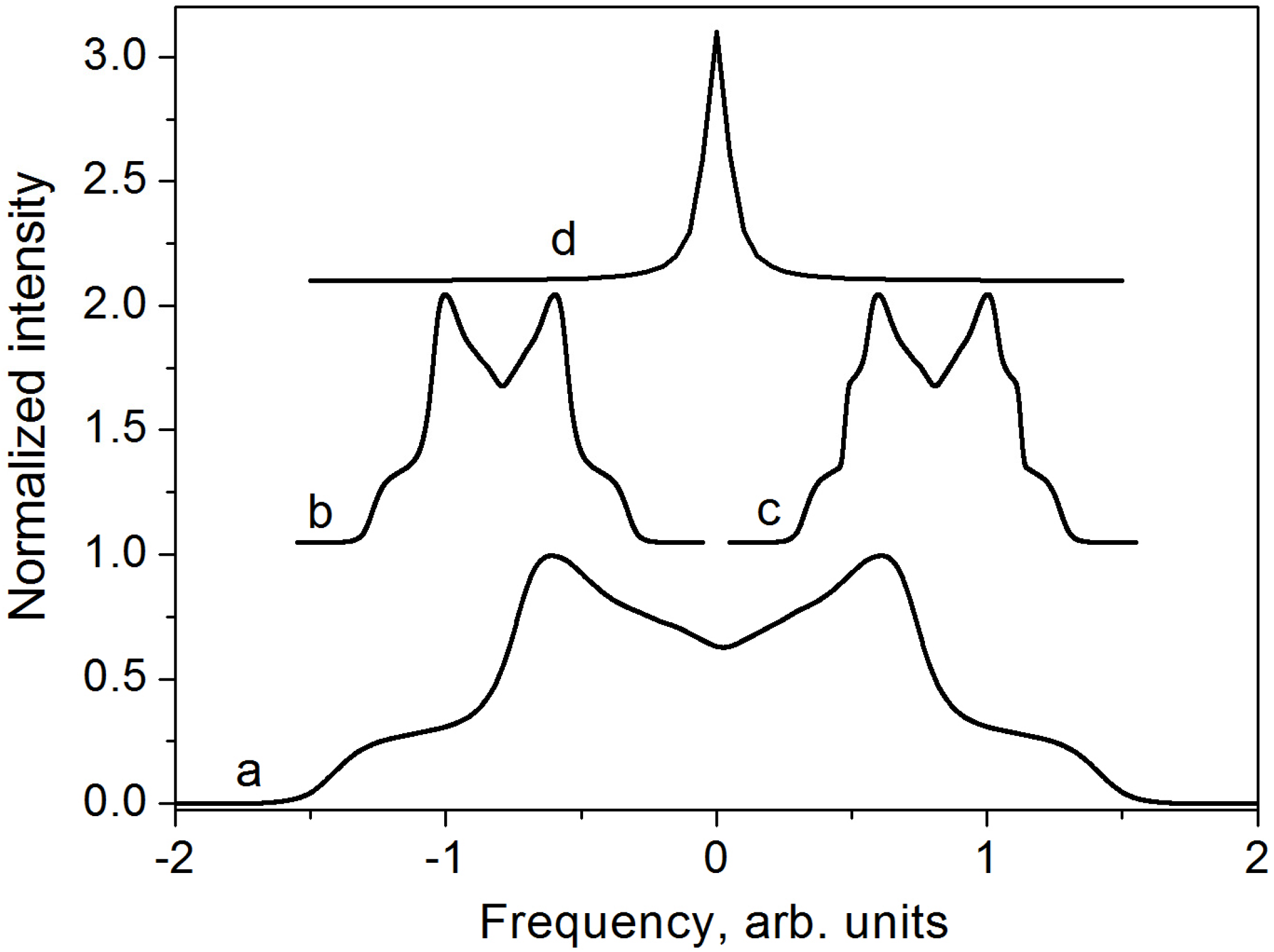

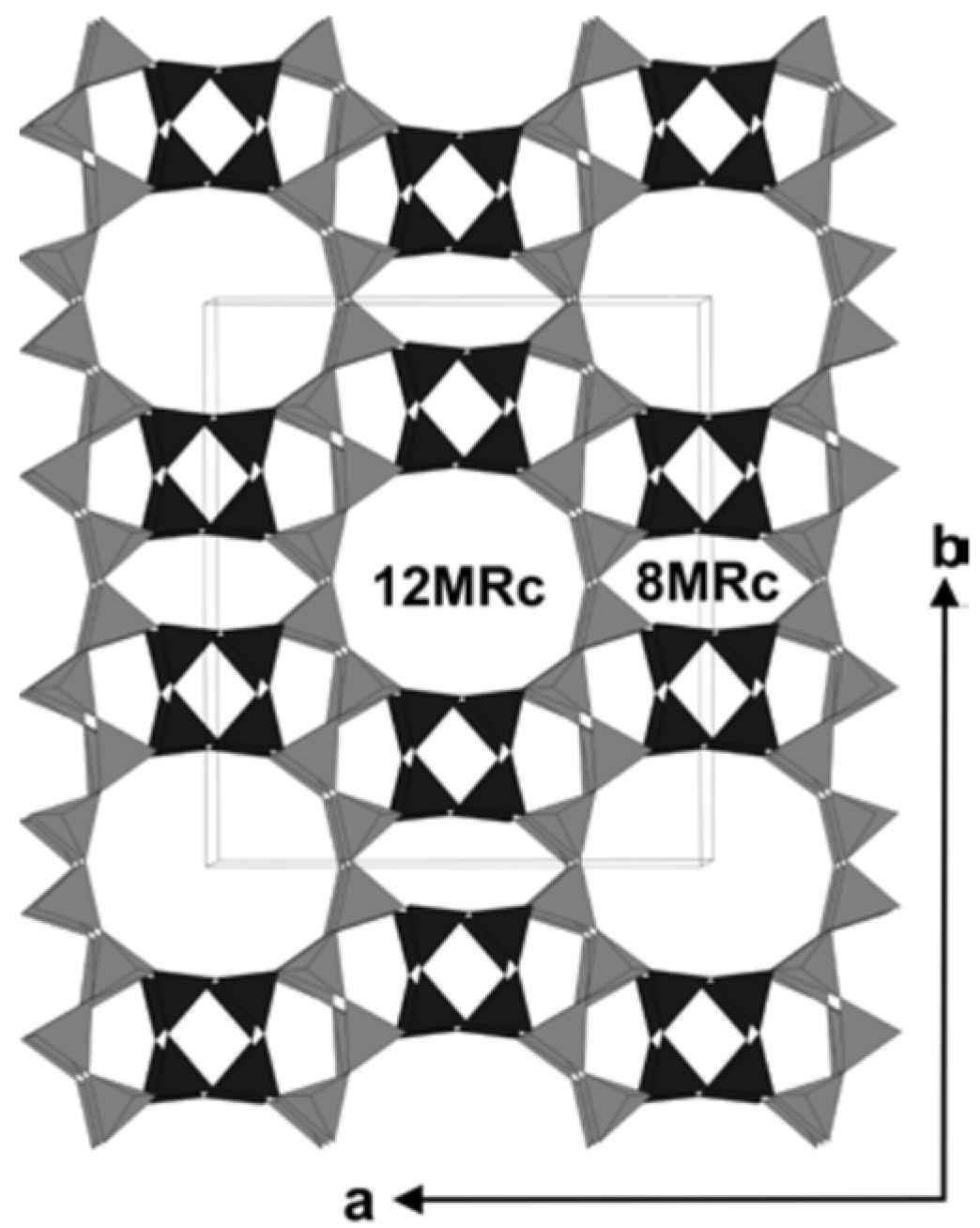
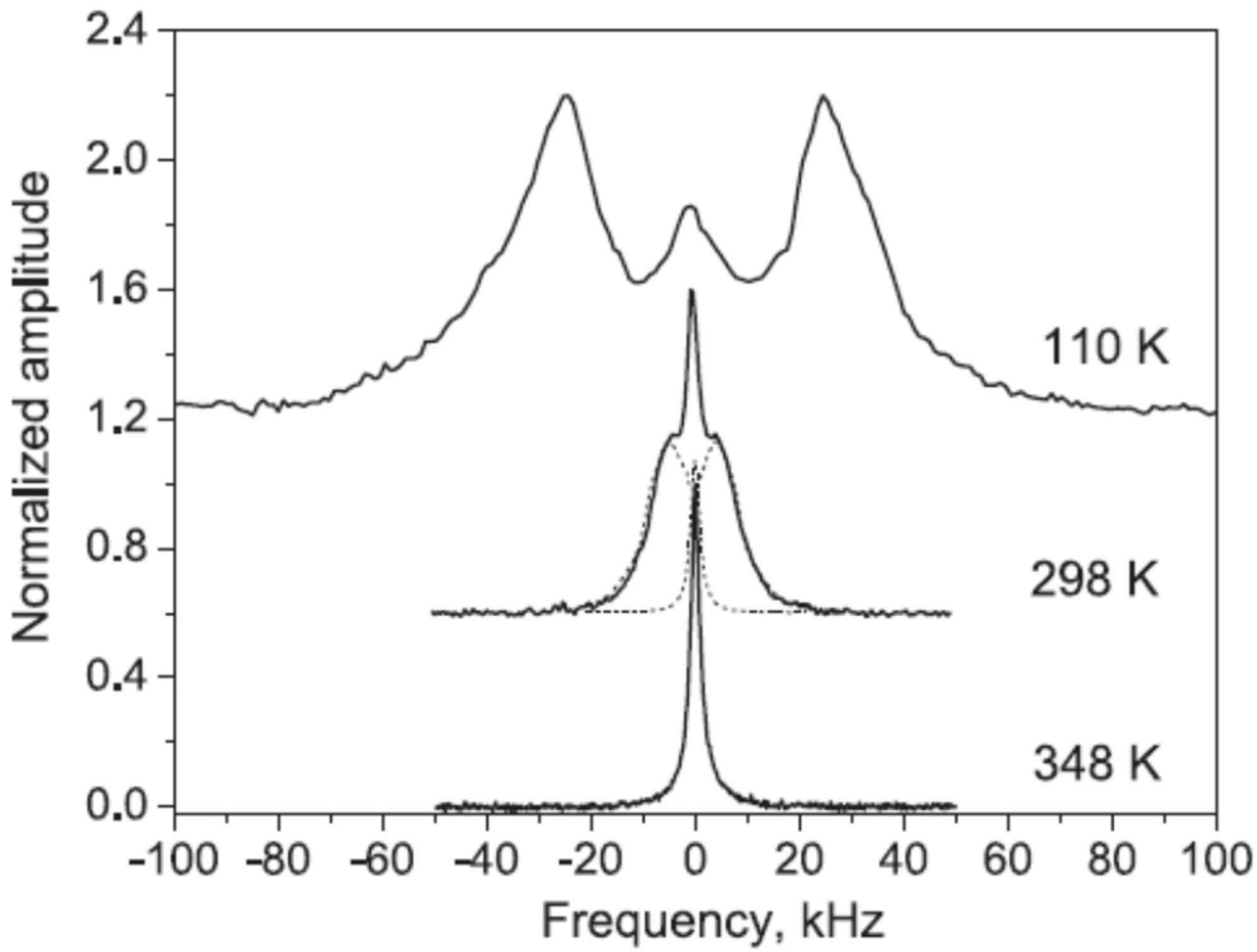
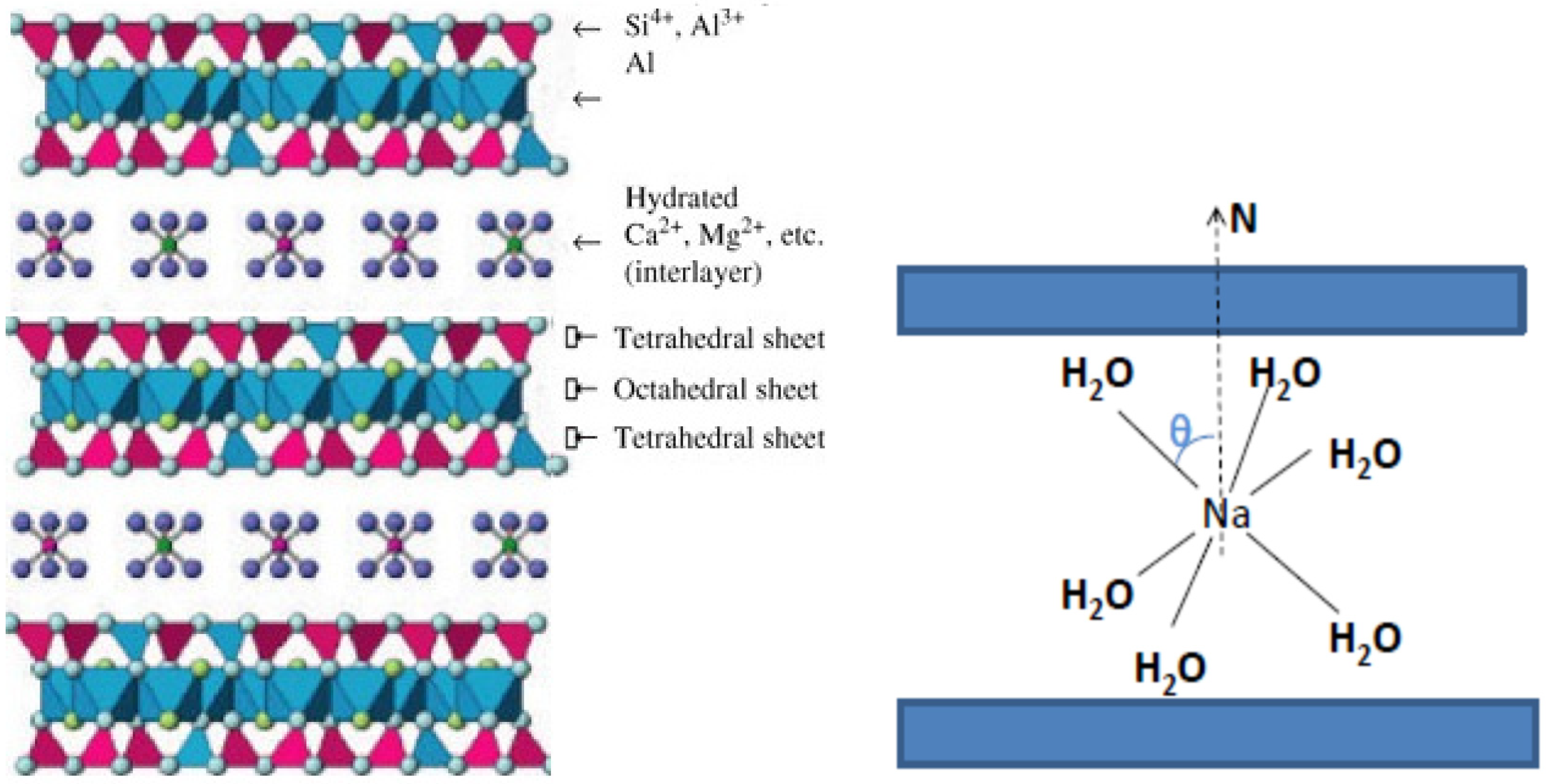
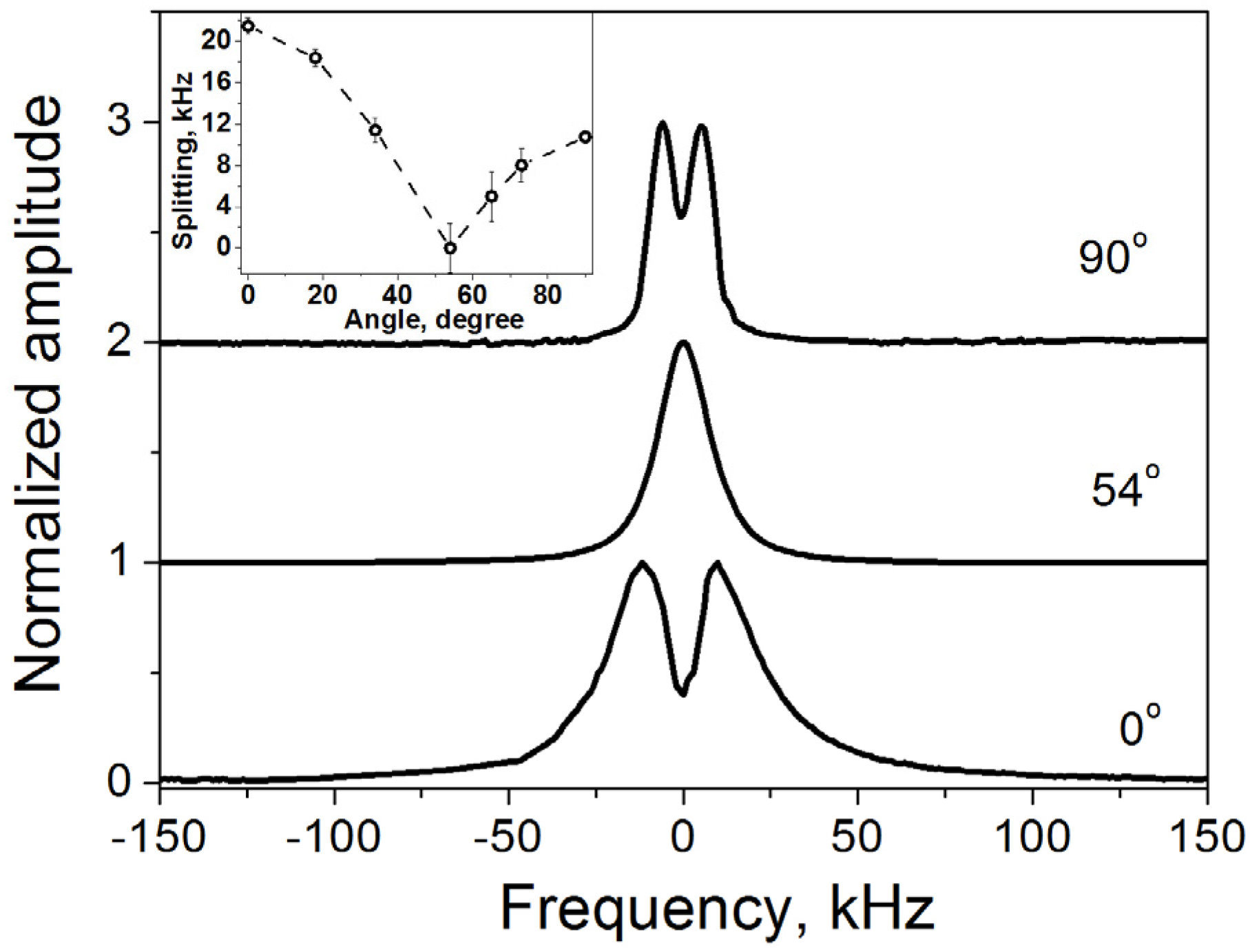
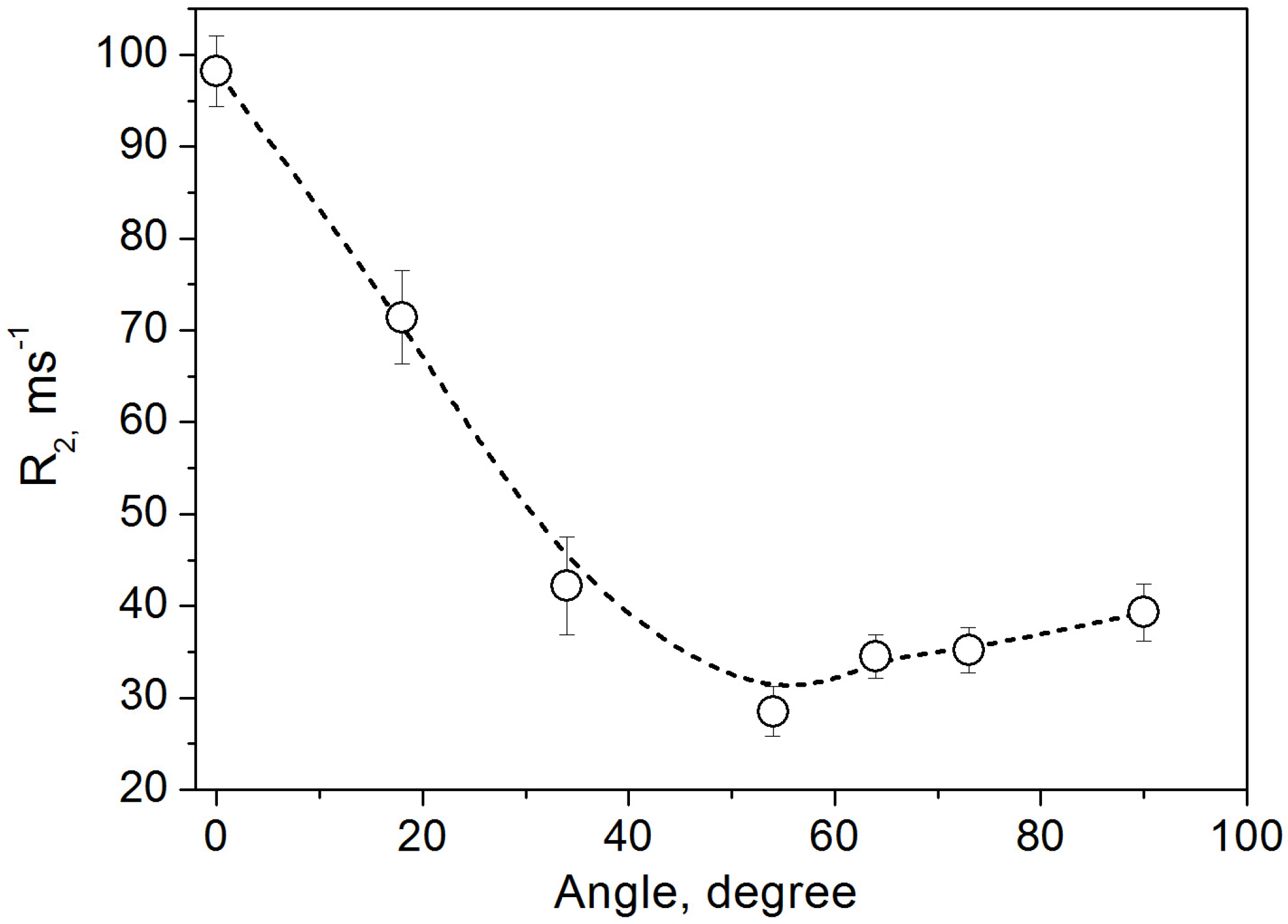
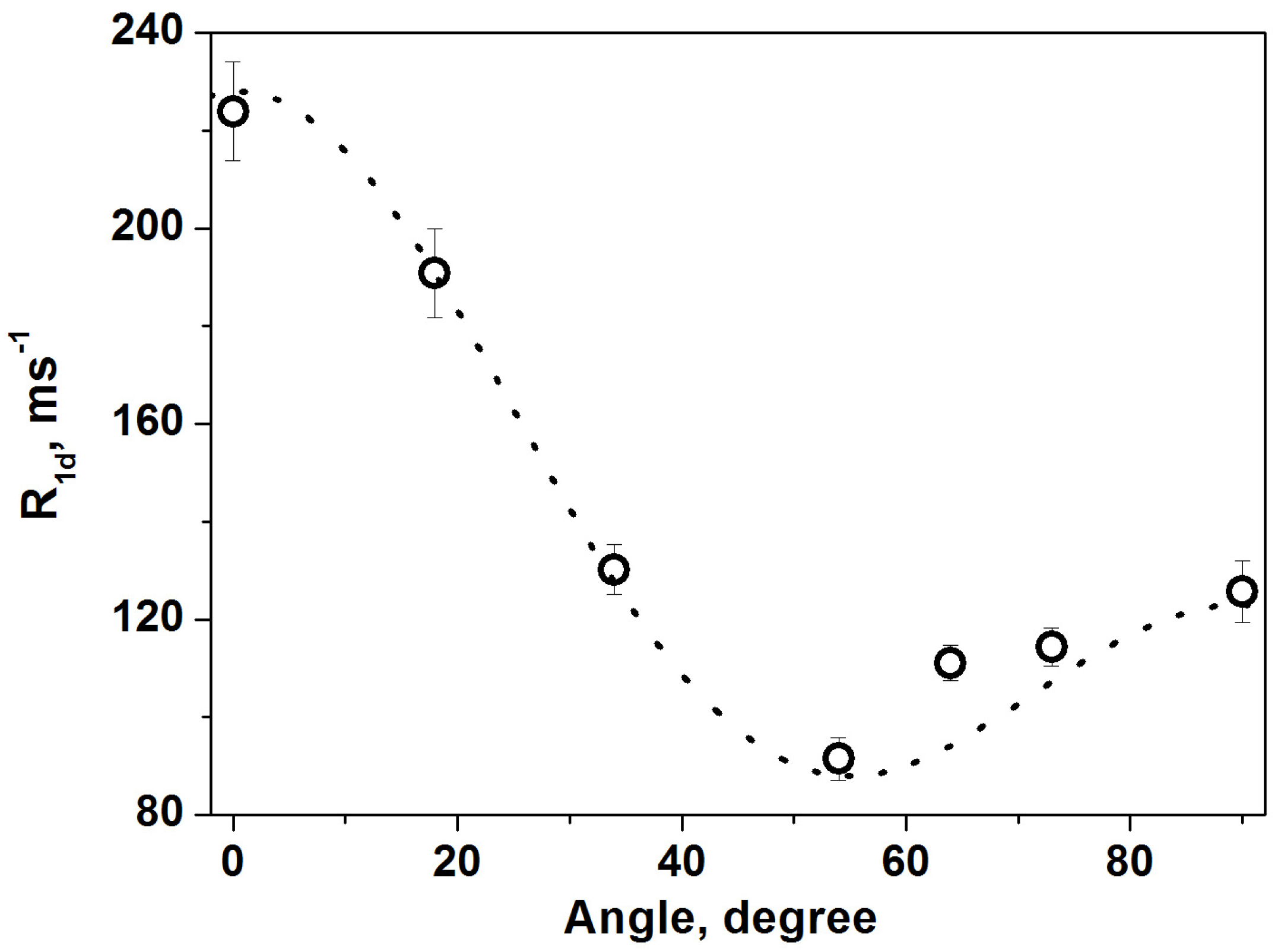
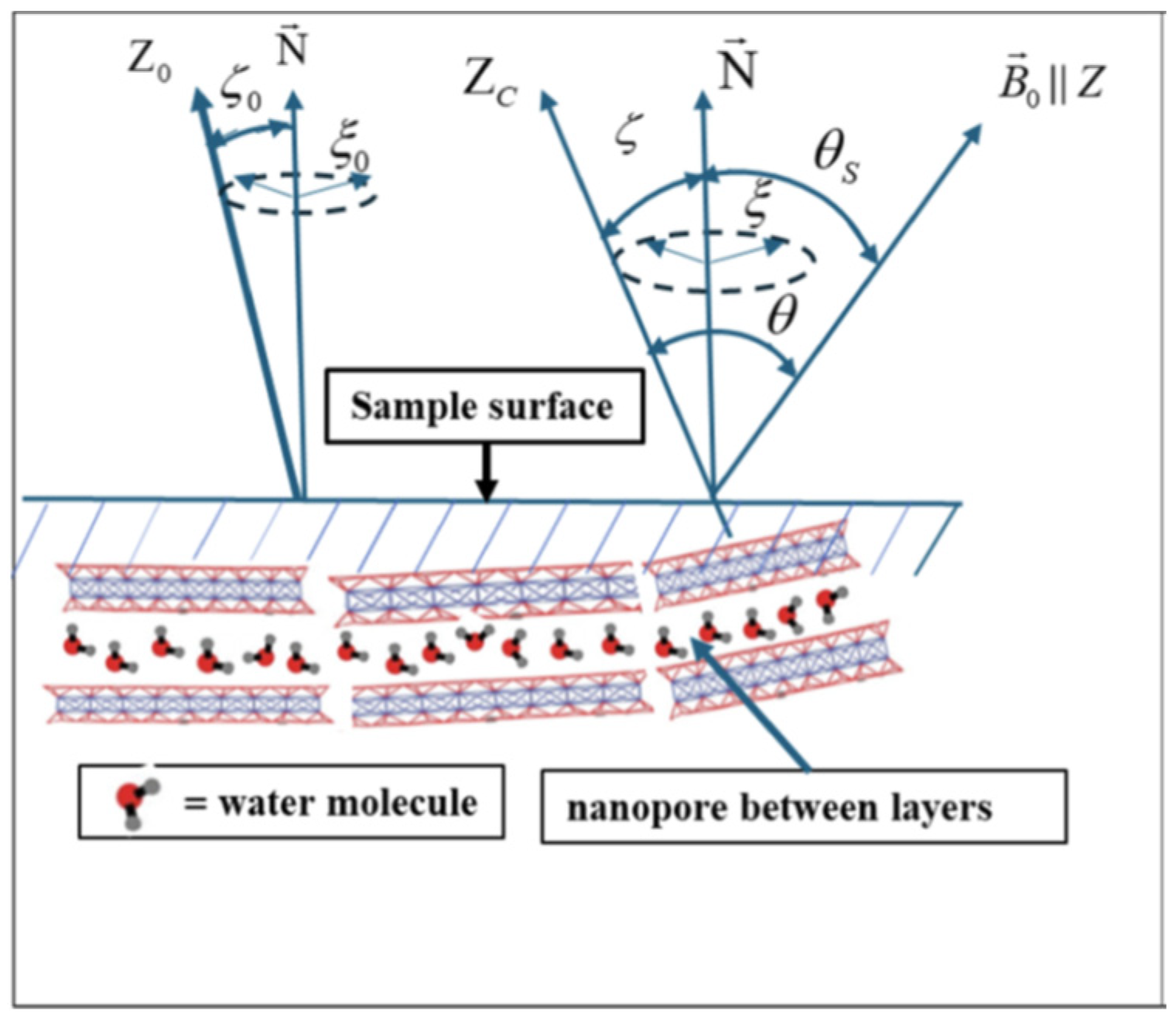
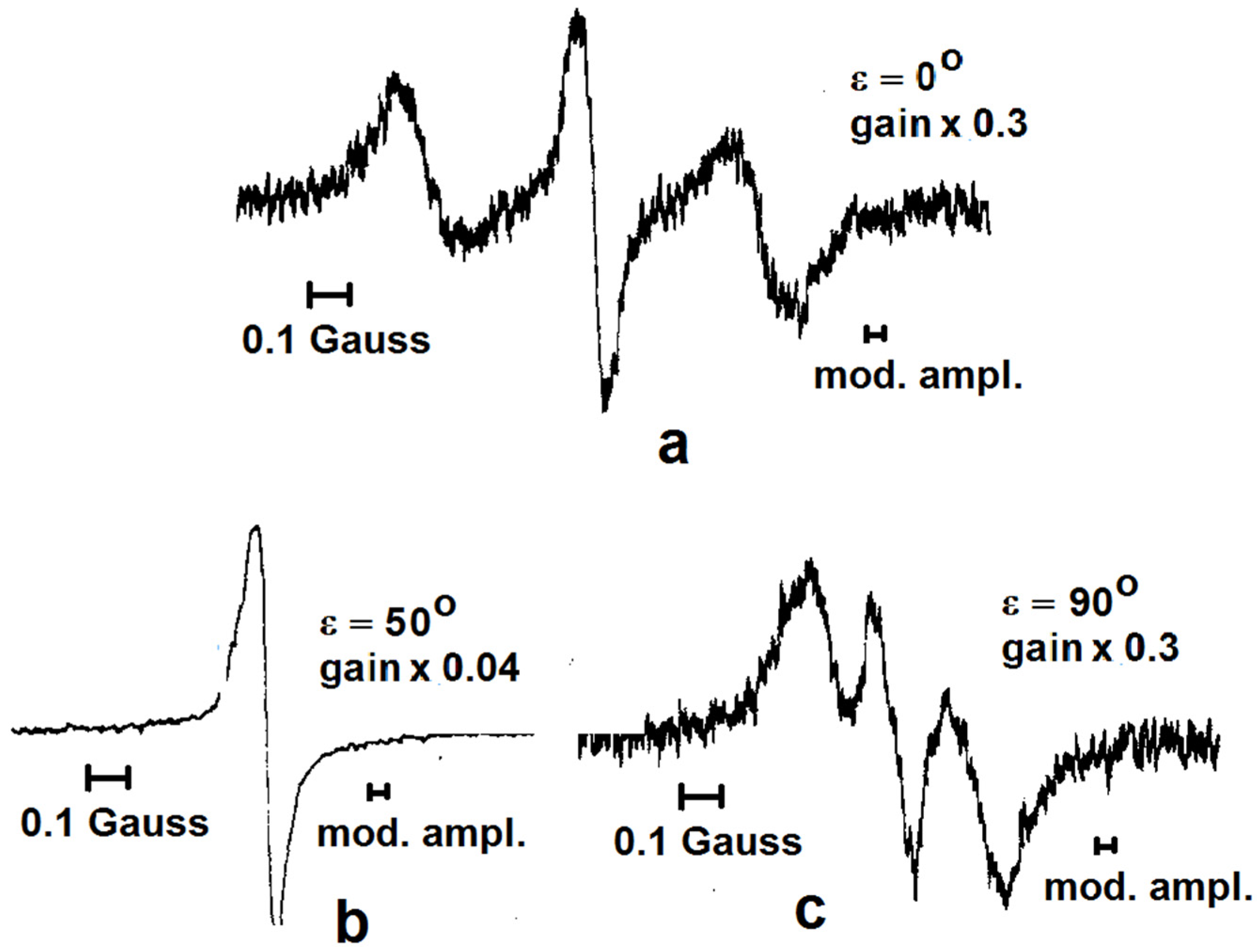

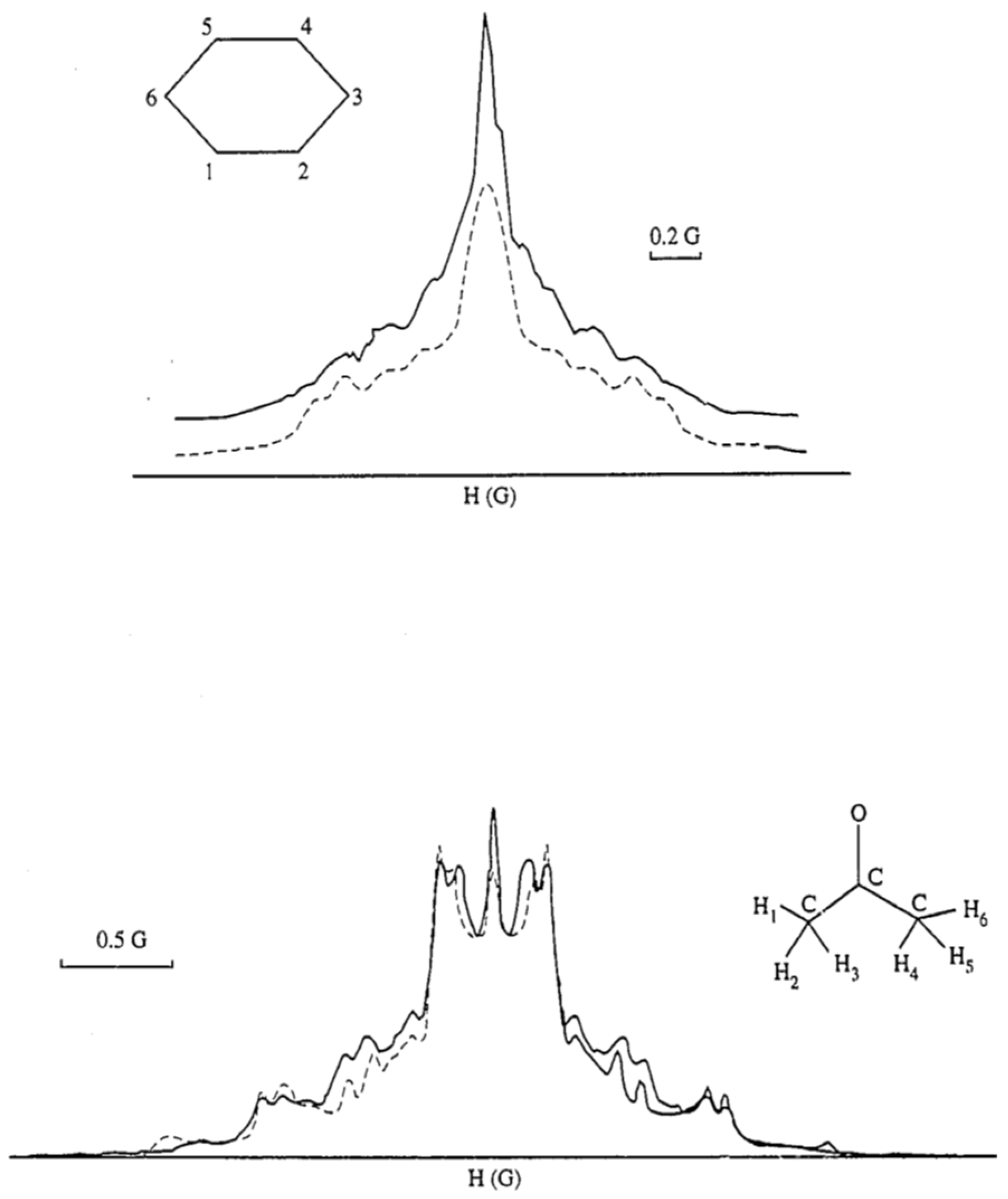
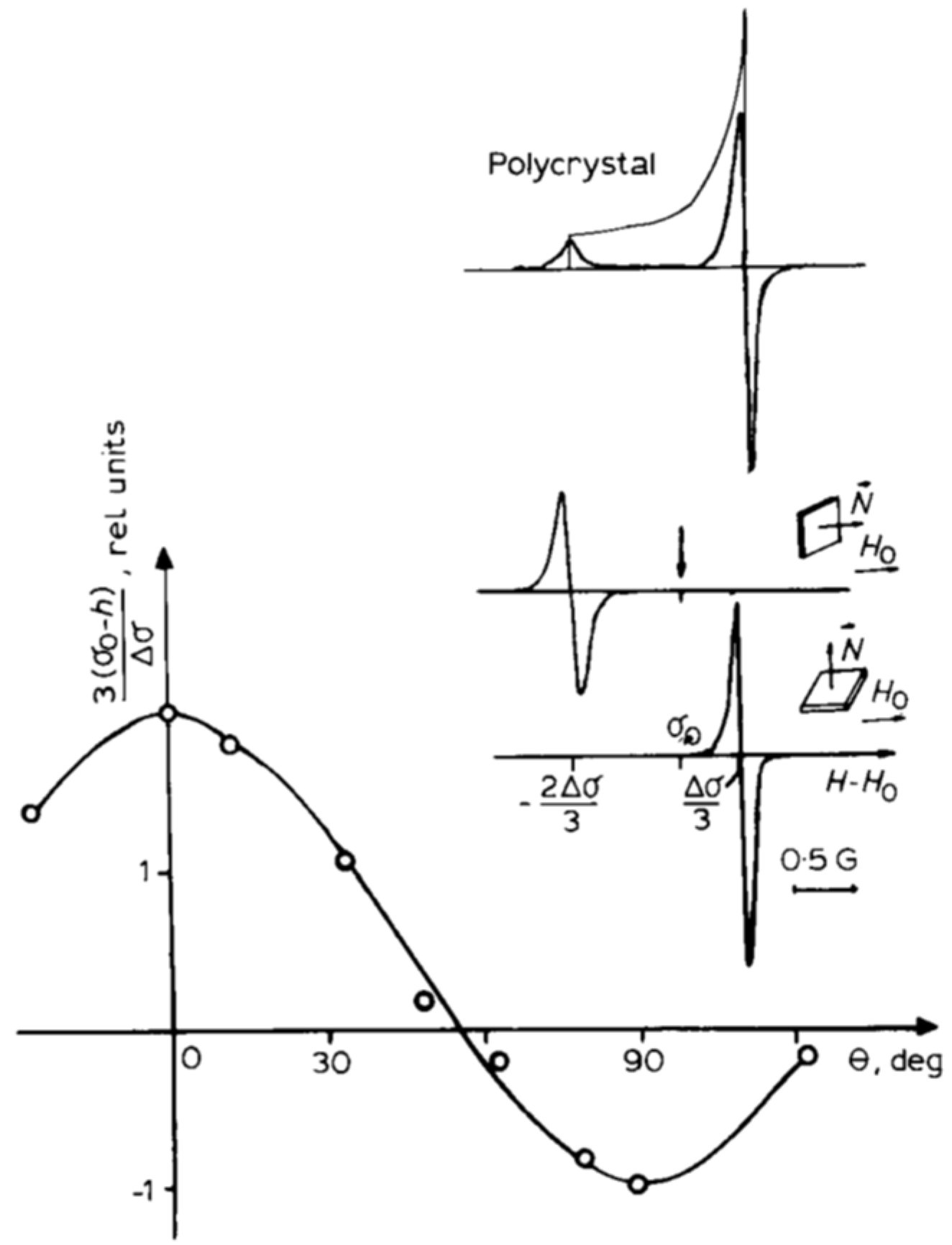
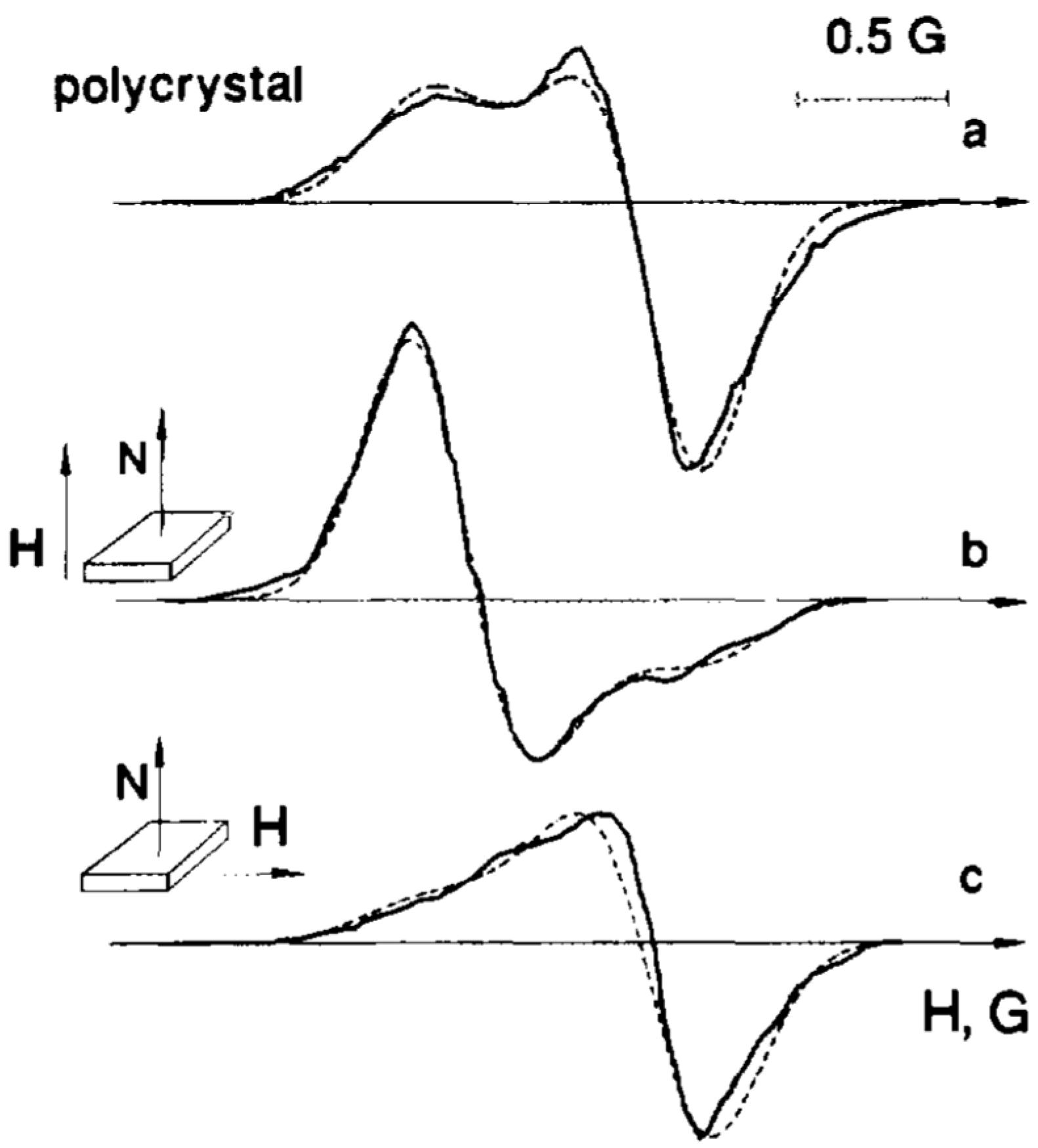

Disclaimer/Publisher’s Note: The statements, opinions and data contained in all publications are solely those of the individual author(s) and contributor(s) and not of MDPI and/or the editor(s). MDPI and/or the editor(s) disclaim responsibility for any injury to people or property resulting from any ideas, methods, instructions or products referred to in the content. |
© 2025 by the author. Licensee MDPI, Basel, Switzerland. This article is an open access article distributed under the terms and conditions of the Creative Commons Attribution (CC BY) license (https://creativecommons.org/licenses/by/4.0/).
Share and Cite
Panich, A. Two Approaches to Solid-State NMR of Mobile Molecules in Nanoporous Materials. Molecules 2025, 30, 3603. https://doi.org/10.3390/molecules30173603
Panich A. Two Approaches to Solid-State NMR of Mobile Molecules in Nanoporous Materials. Molecules. 2025; 30(17):3603. https://doi.org/10.3390/molecules30173603
Chicago/Turabian StylePanich, Alexander. 2025. "Two Approaches to Solid-State NMR of Mobile Molecules in Nanoporous Materials" Molecules 30, no. 17: 3603. https://doi.org/10.3390/molecules30173603
APA StylePanich, A. (2025). Two Approaches to Solid-State NMR of Mobile Molecules in Nanoporous Materials. Molecules, 30(17), 3603. https://doi.org/10.3390/molecules30173603






